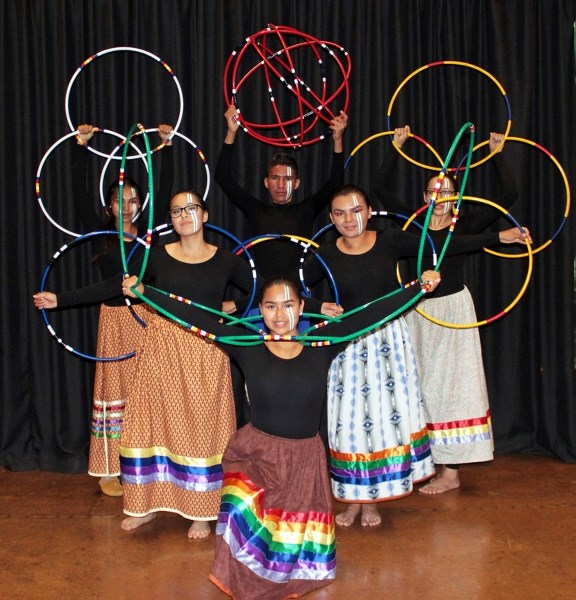The Kehewin Native Dance Theatre shared Trickster stories with residents of Bonnyville during their Wonska Weesakeechak performance.
Audience members at the Lyle Victor Albert Centre were given a condensed version of Indigenous history on Thursday, Aug. 4.
Written by theatre co-founder Rosa John, Wonska Weesakeechak tackled past and present issues faced by Indigenous people. The performance was put on by youth from surrounding aboriginal communities.
“The story is actually made-up of many stories. After the first train caused all the buffalo to leave, and our culture went through residential schools, over the years the people found themselves lost. They started forgetting the stories of Trickster,” said John.
In Cree culture, Trickster stories were originally shared from generation to generation as a way to pass down essential life skills. The first half of the performance depicts how the stories came to be forgotten through colonization.
“The stories teach us how to live within the community. When Trickster disappeared, the people forgot, and started adopting European customs. When that happened, the whole culture started disappearing,” John expressed.
In delivering her message, John hold nothing back. Leading up to colonization, each scene becomes increasingly more impactful.
Colonists are seen killing-off buffalo, before forcing Cree tribes to choose between signing a treaty, or going hungry. According to John, the depiction is historical, and shows struggles Cree youth have only begun to overcome.
“It was only when they fought within themselves, to re-learn the culture, that the situation improved,” explained John. “We're starting to see less youth committing suicide, and getting caught up in drugs and alcohol. They're starting to want to learn.”
Representation of this is shown during the celebratory dance at the end of the show. Performers used six hoops, symbolizing each of the nations recognized by Treaty Six, to show their solidarity in continuing to move forward.
To prepare for the various changes in dance style and interpretation, performers rarely took a day off in the month leading up to opening day. They wanted to make sure everything was perfect when they were given the chance to tell their story.
“We worked hard. It's important to me because I get to learn, and share my culture with people,” said 17-year-old performer Amber Desjarlais.
Like many of her classmates, Desjarlais joined the production to gain a better understanding of Cree tradition, and to share it with youth in the future.
“I love it because I'm trying to pass it on to younger generations. I want them to feel included in the Indigenous community,” she added.
The performance was the only local showing of Wonska Weesakeechak, but the work isn't over for the theatre group. They'll keep the story fresh in their minds before taking it on the road for 10 shows across five schools in Ontario, in March 2018.



